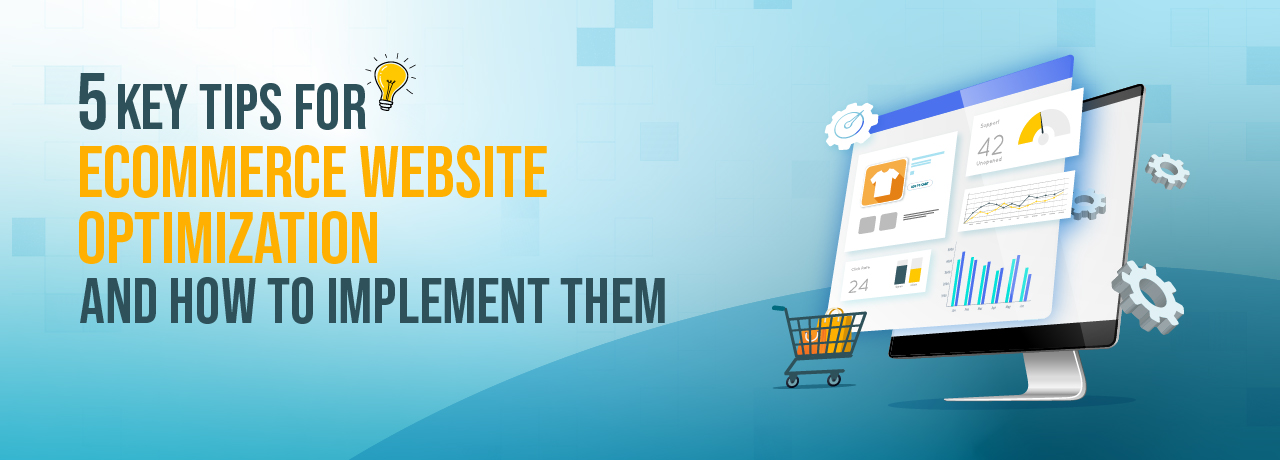
Five key tips for eCommerce optimization and how to implement them:
Optimizing an eCommerce site can significantly enhance user experience, increase conversion rates, and boost sales. Here are five key tips for eCommerce optimization and how to implement them:
1. Improve Page Load Speed
How:
- Optimize Images: Compress images using tools like TinyPNG or JPEG Optimizer without compromising on quality.
- Use a Content Delivery Network (CDN): CDNs store copies of your site’s static files closer to users, reducing latency.
- Minimize HTTP Requests: Combine files (CSS, JavaScript) to reduce the number of requests.
- Leverage Browser Caching: Enable caching so that users’ browsers can store parts of your site, which speeds up subsequent visits.
- Enable Compression: Use Gzip or Brotli to compress your site’s files.
2. Enhance Mobile Experience
How:
- Responsive Design: Ensure your site is mobile-friendly and adjusts smoothly to different screen sizes.
- Simplify Navigation: Use a clear, easy-to-navigate menu structure tailored for mobile users.
- Optimize Touch Elements: Make sure buttons and links are easily tappable with enough space around them.
- Accelerated Mobile Pages (AMP): Implement AMP to speed up page loading on mobile devices.
3. Simplify the Checkout Process
How:
- Reduce Checkout Steps: Aim for a one-page checkout or minimize the number of steps required to complete a purchase.
- Guest Checkout: Allow users to purchase without creating an account.
- Auto-fill and Auto-complete: Use tools to fill in user information automatically based on previous data.
- Clear Progress Indicators: Show users where they are in the checkout process and what steps remain.
4. Optimize Product Pages
How:
- High-Quality Images and Videos: Use high-resolution images and videos from multiple angles to showcase products.
- Detailed Descriptions: Write comprehensive and engaging product descriptions with key features, benefits, and specifications.
- Customer Reviews and Ratings: Display user reviews and ratings to build trust and provide social proof.
- Call-to-Action (CTA): Use clear and compelling CTAs like “Add to Cart” or “Buy Now”.
5. Utilize Data and Analytics
How:
- Google Analytics: Set up and regularly review Google Analytics to track user behavior, traffic sources, and conversion rates.
- A/B Testing: Use tools like Optimizely or VWO to test different versions of your website to see which performs better.
- Heatmaps and Session Recordings: Use tools like Hotjar or Crazy Egg to understand how users interact with your site.
- Conversion Funnel Analysis: Identify where users drop off in the purchasing process and make improvements to those areas.
Implementation Example:
Improving Page Load Speed:
- Optimize Images:
- Use TinyPNG to compress product images.
- Implement srcset in HTML to serve appropriate image sizes based on the user’s device.
- CDN Setup:
- Choose a CDN provider like Cloudflare or Amazon CloudFront.
- Configure your website to serve static assets (images, CSS, JavaScript) through the CDN.
Enhancing Mobile Experience:
- Responsive Design:
- Use CSS media queries to create a responsive layout.
- Test the site across various devices and browsers using tools like BrowserStack.
- Simplify Navigation:
- Implement a hamburger menu for mobile devices.
- Ensure the search bar is easily accessible on mobile.
By focusing on these key areas and continuously monitoring and refining your strategies, you can significantly enhance the performance and user experience of your eCommerce site.